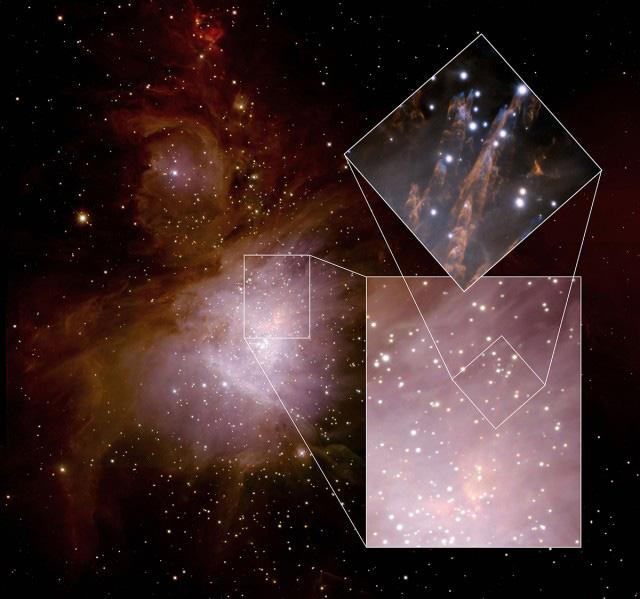
The Orion Nebula as seen with the infrared camera on the Blanco 4-meter Telescope at the Cerro Tololo Inter-American Observatory in Chile. SAO astronomers undertook a survey of molecular lines to study the high velocity activity seen in the region.
Astronomers have found that complex molecules, including organic species, exist in numerous kinds of places in the cosmos, especially in the giant molecular clouds of gas and dust where new stars form. Scientists use radio or millimeter wavelength telescopes to detect the distinct spectral lines emitted by these molecules as they rotate or vibrate, and to study the sophisticated chemistry that produced them -- chemistry that may also lead to the seed ingredients for life.
Molecules are interesting for another reason as well: they act as unique regional monitors because each one has its own particular sensitivity to the temperature, density, and motion of its local environment. The famous Orion Nebula is an especially interesting region to study -- it is the closest place with massive stars forming, and an analysis of its activity should explain why. Four SAO astronomers, Ciriaco Goddi, Lincoln Greenhill, Liz Humphreys, and Lynn Matthews, together with two colleagues, have completed a survey of the spectral features from one mysterious location in the Orion Nebula where there are signs of very young massive stars amidst remnants of a mysterious, explosive-like event. There have already been about twenty spectral line studies of this region done in the past twenty-five years, but this new one is the first to probe the seven-millimeter wavelength region in which the molecule silicon monoxide (SiO) is known to emit -- and this molecule is a demonstrated tracer of high-velocity shocks associated with star formation.
The astronomers detected sixty-seven lines from thirteen molecules including SiO, among them the organic molecules acetone (CH3COCH3) and cyanopolyynes (HC5N, HC7N). The existence of such long chain molecules in close proximity to the energetic regions of star formation was a surprise. The team was particularly interested in probing for evidence of high-speed motions (thought from theory to be as much as 1000 kilometers per second), but the molecules showed no evidence for these high velocities with the current instruments. Although the study does not resolve the issue of high velocity flows, it does complement the arsenal of molecular probes that can be used in the future, and helps to clarify that any very rapid motions must be restricted to a very small scale around young stars.